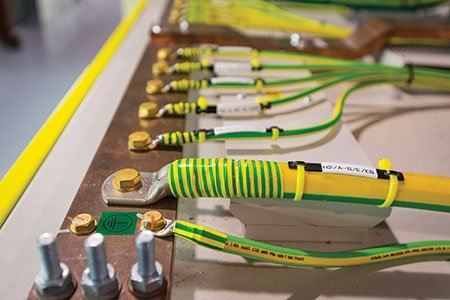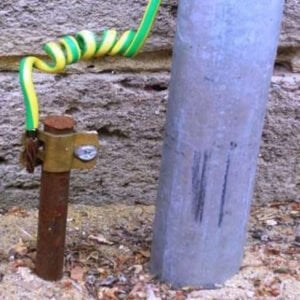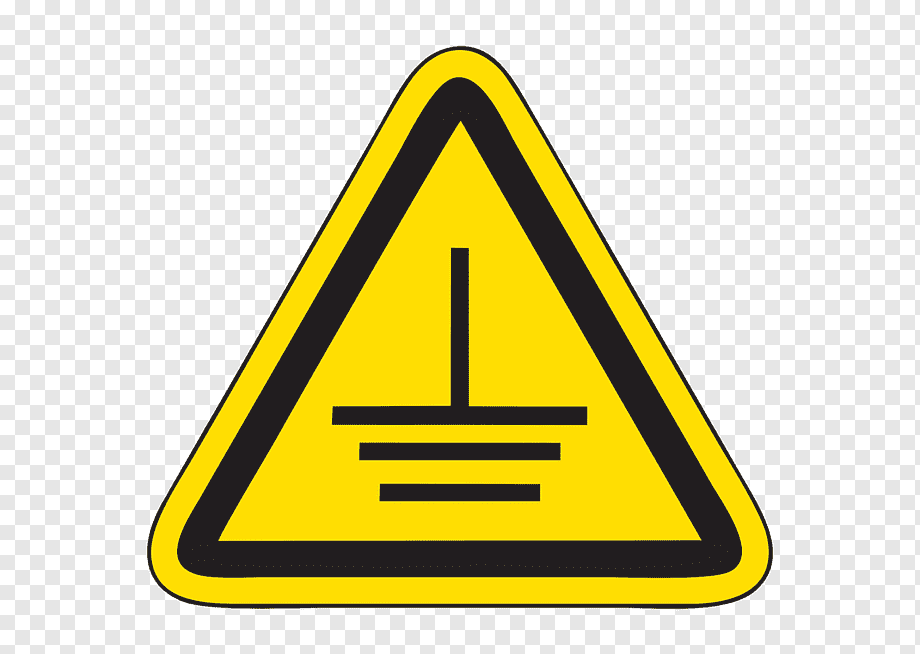
Difference Between Earthing and Grounding
 Earthing and grounding are similar terms. Still, these are having many differences.
Earthing and grounding are similar terms. Still, these are having many differences.
The main difference between earthing and grounding is that the earthing refers that the circuit is physically connected to the ground with Zero Volt Potential.
But, grounding refers that the circuit is not physically connected to ground, but still has zero potential.
One other important difference between earthing and grounding is that in grounding, the current-carrying part is connected to the ground. But, in earthing the non-current carrying parts are connected to the ground.
What is Earthing?
Earthing is the process of protecting against the unwarranted spikes and bouts of electricity which may cause damage to appliances
as well as life. Thus, we need to understand the concept of electric potential.
Earthing means the connection of non-current carrying parts of the equipment to the earth.
During the occurrence of any fault in the system, the potential of the non-current part of the equipment raises.
And, if anyone touches the body of the equipment, then they may get shocked.
This earthing discharges the leakage of the current to the earth. In this way, we may avoid electric shock.
It also protects our home appliances from lightning strokes.
To achieve the earthing, we need to connect the parts of the installation to the earth by using the earth conductor or electrode.
It is being placed in the soil at some distance below the ground level.
 What is Grounding?
What is Grounding?
It is similar to the earthing, for doing insulation of electrical devices against accidental currents.
The main live wire is connected to the power supply to connect the appliance, but the other portion of the wire is led under the earth.
In the grounding process, the current-carrying part is directly connected to the ground.
In this way, grounding provides the return path for the leakage current and as a result,
it protects the power system equipment from damage.
When the fault occurs in the equipment, the current in all the three phases of the equipment becomes unbalance.
The grounding provides great safety to the equipment and improves service reliability.
Difference Between Earthing and Grounding

Difference between Earthing and Grounding
The important difference between earthing and grounding
| Parameter | Earthing | Grounding |
| Definition | It protects human life from electrocuted. | It protects the entire power system from malfunctioning. |
| Potential | It contains zero potential. | It does not possess any zero potential. |
| Location | It is placed between the equipment body and earth and kept under the earth’s surface. | It is placed between the neutral of the equipment and ground. |
| Types | It is of five types such as Pipe, Plate, Rod earthing, tap earthing, and strip earthing. | It is of three types such as Solid, Resistance, and Reactance grounding. |
| Color of wire | The earth wire is of green color. | The grounded wire is black in color. |
| Example | It is in use in transformer, generator, and motor for connecting to the earth. | It is in use as a neutral generator and power transformer and connected to the ground. |
| Application | Earthing discharges the electrical energy to the earth. It is mainly in use to avoid shocking the humans. | Grounding provides the return path to the current. It is mainly in use for unbalancing when the electric system overloads. |
Some more facts:
- The earthing is for the connection of the non-current carrying part to the earth. Whereas, in grounding the current-carrying part directly connected to the ground.
- The grounding is responsible for load balancing and earthing is responsible for protection from electrical shock.
- The earthing electrode must not be placed near the building whose installation system is earthed more than 1.5 m away.
- The resistance of the earth wire should be less than 1 ohm.
- It must be taken care that the material of wire used for the electrode and circuit should be the same.
- The electrodes have to be in a vertical position so that it can touch the layers of the earth.
- The size of the conductor must be more than 2.6 square mm and only half of the wire should be used for electrical wiring.
FAQs about Earthing and Grounding:
Q.1: How earthing can be beneficial?
Solution: We may go barefoot outside on the Earth or swim in the river for a half-hour or more a day. On land, conductive surfaces for grounding are including soil, grass, sand, gravel, and rock. But we may not ground ourselves on asphalt, vinyl, and wooden surface.
Q.2: Can earthing protects against cell phone frequency?
Solution: There is no such research results are still available.
Q.3: What is the best floor in the house for grounding purposes?
Solution: Wood or vinyl are not conductive and hence, floors of these materials will not ground us. On the other hand, if the floor has unsealed concrete or stone built directly on the Earth, then it is likely to be conductive.
electric fuse
We are pleased to have you visit our pages on social networking sites,
where we publish exclusive offers on our website.
Our Facebook page here .
Our Twitter account is here .


 What is Grounding?
What is Grounding?
